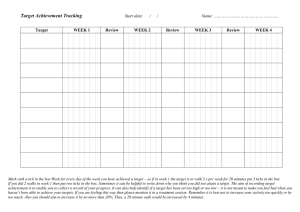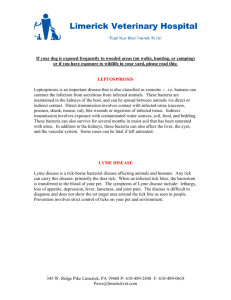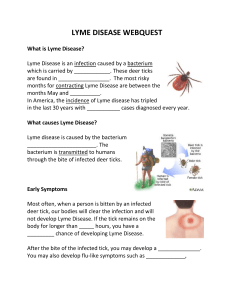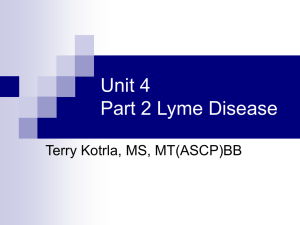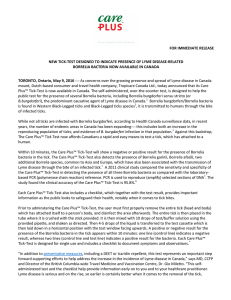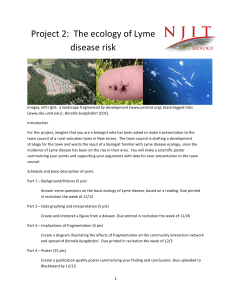Deer Tick Information What is Lyme disease?
advertisement
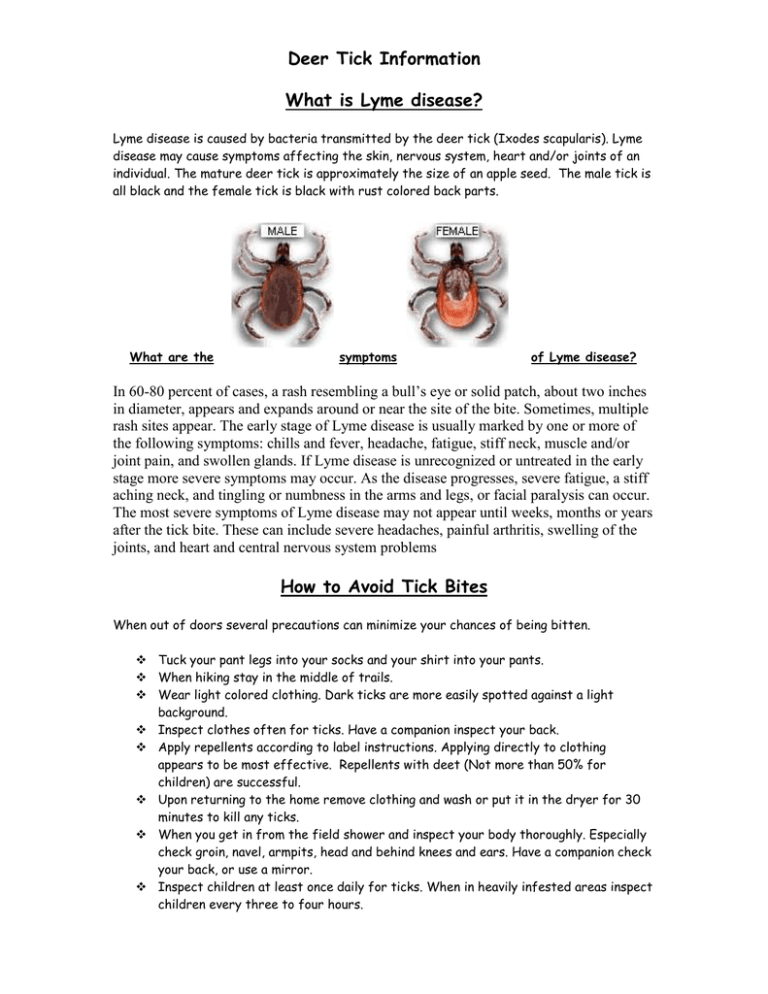
Deer Tick Information What is Lyme disease? Lyme disease is caused by bacteria transmitted by the deer tick (Ixodes scapularis). Lyme disease may cause symptoms affecting the skin, nervous system, heart and/or joints of an individual. The mature deer tick is approximately the size of an apple seed. The male tick is all black and the female tick is black with rust colored back parts. What are the symptoms of Lyme disease? In 60-80 percent of cases, a rash resembling a bull’s eye or solid patch, about two inches in diameter, appears and expands around or near the site of the bite. Sometimes, multiple rash sites appear. The early stage of Lyme disease is usually marked by one or more of the following symptoms: chills and fever, headache, fatigue, stiff neck, muscle and/or joint pain, and swollen glands. If Lyme disease is unrecognized or untreated in the early stage more severe symptoms may occur. As the disease progresses, severe fatigue, a stiff aching neck, and tingling or numbness in the arms and legs, or facial paralysis can occur. The most severe symptoms of Lyme disease may not appear until weeks, months or years after the tick bite. These can include severe headaches, painful arthritis, swelling of the joints, and heart and central nervous system problems How to Avoid Tick Bites When out of doors several precautions can minimize your chances of being bitten. Tuck your pant legs into your socks and your shirt into your pants. When hiking stay in the middle of trails. Wear light colored clothing. Dark ticks are more easily spotted against a light background. Inspect clothes often for ticks. Have a companion inspect your back. Apply repellents according to label instructions. Applying directly to clothing appears to be most effective. Repellents with deet (Not more than 50% for children) are successful. Upon returning to the home remove clothing and wash or put it in the dryer for 30 minutes to kill any ticks. When you get in from the field shower and inspect your body thoroughly. Especially check groin, navel, armpits, head and behind knees and ears. Have a companion check your back, or use a mirror. Inspect children at least once daily for ticks. When in heavily infested areas inspect children every three to four hours.

